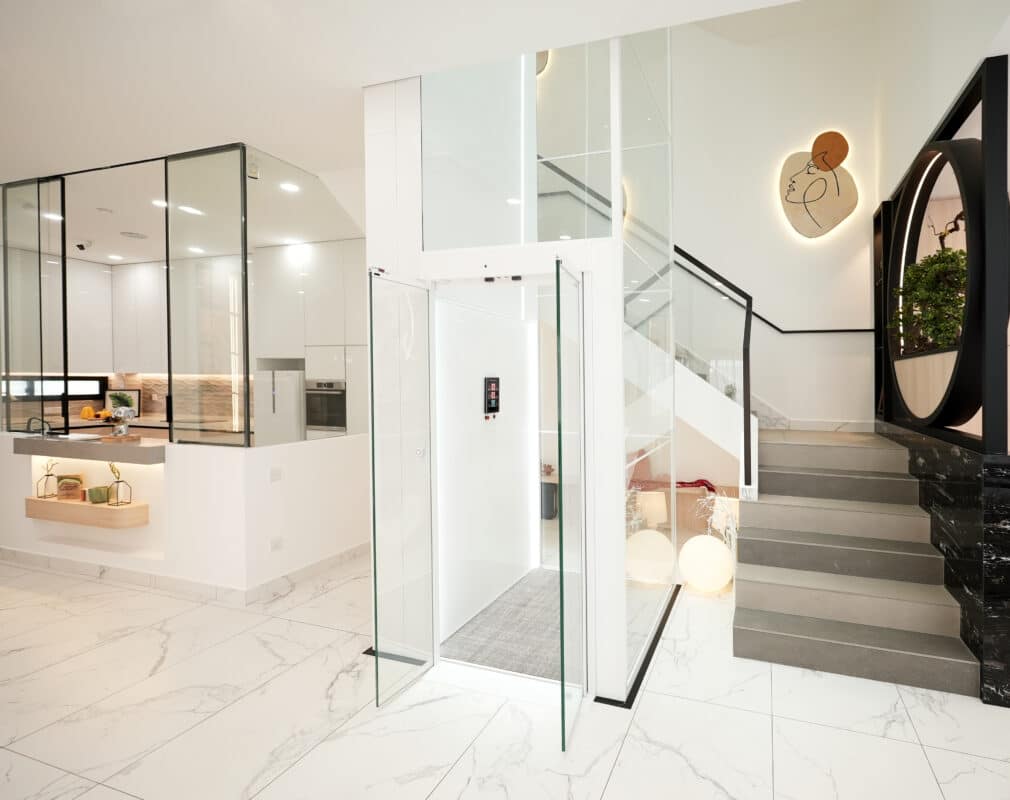
Maintaining their independence and mobility becomes a top priority as our loved ones age. For many seniors, navigating stairs can become a significant challenge, making home lifts an attractive solution. Choosing the right home lift can ensure safety, enhance accessibility, and improve the quality of life for seniors. This blog will help you understand the different types of domestic lifts, key features, and considerations to make an informed decision for choosing the right stair lifts for seniors.
Understanding Home Lifts for Elderly
Overview of Different Types of Home Lifts
When it comes to selecting a home lift, several types cater to various needs and preferences:
Stair Lifts: Installed on the staircase, stair lifts are chairs that move along a rail, ideal for homes with limited space and no room for a traditional lift shaft.
Platform Lifts: These lifts can accommodate a wheelchair and are designed for short travels, typically between two levels.
Through-Floor Lifts: These lifts travel vertically through a hole in the floor, providing direct access between floors without using stairs.
Hydraulic Lifts: Operate using a hydraulic system, offer smooth and quiet operation, and are suitable for multiple levels.
Traction Lifts: Use a counterweight system commonly found in commercial buildings but also suitable for larger homes.
Key Features and Benefits of Each Type of Household Elevator
Stair Lifts: Affordable, easy to install, and ideal for straight or curved staircases.
Platform Lifts: Versatile, can handle wheelchairs, and are suitable for short distances.
Through-Floor Lifts: Space-efficient offers a discreet solution with minimal structural changes.
Hydraulic Lifts: Smooth and quiet operation, suitable for multiple floors, but may require a machine room.
Traction Lifts: Reliable for high usage, suitable for homes with multiple floors, and offers a comfortable ride.

Factors to Consider When Choosing a Home Stair Lifts for Seniors
Space and Structural Requirements
Before deciding on a home lift, assess the available space and any structural changes needed. Stair chair lifts require minimal space and modifications, while through-floor and hydraulic lifts may need significant adjustments.
Safety Features of Household Elevator
Safety is paramount when selecting lifts for homes, especially for seniors. Look for features such as:
Emergency Stop Buttons: Easily accessible for immediate stopping.
Battery Backup: Ensures operation during power outages.
Safety Sensors: Detect obstructions and stop the lift to prevent accidents.
Seat Belts and Handrails: Provide additional security for stair chair lifts.
Ease of Use and Control Mechanisms
Choose user-friendly stair lifts for seniors. Controls should be intuitive, with simple buttons or joysticks. Remote controls can add convenience, allowing seniors to call the lift from any floor.
Customization Options
Internal home lifts can be customized to match home decor and personal preferences. Options include different finishes, colors, and materials. Customizing the interior can make the lift a seamless part of the home environment.
Budget Considerations
Budget plays a crucial role in choosing the right domestic lifts. Costs can vary based on the lift type, installation complexity, and additional features. While stairlifts are more affordable, through-floor and hydraulic lifts can be more expensive but offer more functionality.
Installation and Maintenance of Home Elevators
Professional Installation Process
Hiring professionals for the installation ensures the lift is safely and correctly installed. The process typically involves:
Assessment: Evaluating the home for the best lift type and installation spot.
Customization: Selecting finishes and features.
Installation: Installing the lift system may take a few days to a week, depending on complexity.
Testing: Ensuring the lift operates smoothly and safely.
Regular Maintenance and Servicing
Regular maintenance is essential to keep the lift in good working condition. This includes:
Routine Inspections: Checking mechanical parts, controls, and safety features.
Lubrication: Keeping moving parts well-lubricated to prevent wear and tear.
Cleaning: Ensuring the lift shaft and controls are clean and free of debris.
Tips for Ensuring Long-Term Reliability and Safety
To maximize the lifespan and safety of your stair lifts for seniors:
Follow Manufacturer’s Guidelines: Adhere to recommended maintenance schedules and usage guidelines.
Immediate Repairs: Address any issues promptly to avoid further damage or safety risks.
Professional Servicing: Always use certified technicians for repairs and servicing.
Why Screw and Nut-Driven Home Lifts are Perfect for Elderly
Household elevators can significantly enhance seniors’ quality of life by providing a safe and convenient way to move between floors. Screw and nut-driven home lifts, such as the SWIFT, are particularly well-suited for this purpose. Here’s why these lifts are ideal for seniors:
Ease of Use: Screw and nut-driven lifts are designed to be user-friendly. The simple operation mechanism involves a motor rotating a drive nut along a drive screw, allowing for smooth and easy movement. This straightforward operation benefits seniors with limited physical strength or skill.
Safety Features: Safety is a top priority in home lifts for elderly. Screw and nut-driven lifts come equipped with various safety features, including emergency stop buttons, backup power supplies, and door interlocks. These features ensure that the lift operates smoothly and provides peace of mind by reducing the risk of accidents or malfunctions.
Compact Design: The compact and space-efficient design of screw and nut-driven lifts makes them ideal for homes where space might be limited. This design minimizes the need for extensive renovations, making integrating the lift into existing homes easier without significant modifications.
Reliability and Durability: Screw and nut-driven lifts are known for their robustness and reliability. The screw mechanism is durable and requires minimal maintenance compared to other types of lifts. This reliability ensures seniors can depend on the lift for everyday use without frequent repairs or servicing.
Enhance Mobility and Independence with Swift Lifts
Choosing the right home lift can significantly enhance the mobility and independence of seniors. Swift Lifts offers a range of customizable, safe, and reliable solutions tailored to meet your home and loved ones’ unique needs. With professional installation and comprehensive maintenance services, you can ensure a seamless and worry-free experience.
FAQs
For homes with limited space, stair lifts or through-floor lifts are ideal. Stair lifts require minimal space and structural modifications, while through-floor lifts are compact and discreet.
Home lifts are designed with multiple safety features, including emergency stop buttons, battery backups, safety sensors, and seat belts. These features ensure a safe and secure experience for seniors.
Maintenance involves routine inspections, lubrication of moving parts, and cleaning. It’s essential to follow the manufacturer’s maintenance schedule and address any issues promptly.
The cost of a home lift varies depending on the type, customization options, and installation complexity. Stair lifts are generally more affordable, while through-floor and hydraulic lifts can be more expensive.
Yes, internal home lifts can be customized with different finishes, colors, and materials to blend seamlessly with your home decor. Customization options allow you to create a lift that suits your aesthetic preferences.
Get In Touch










